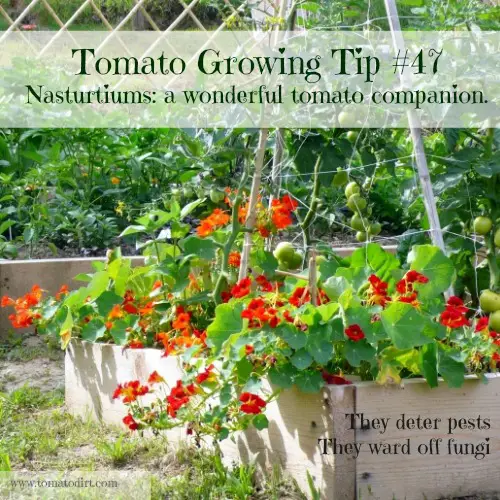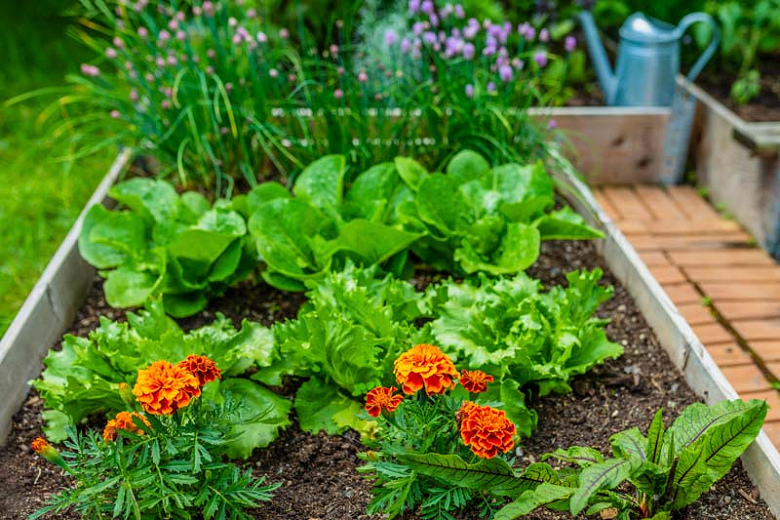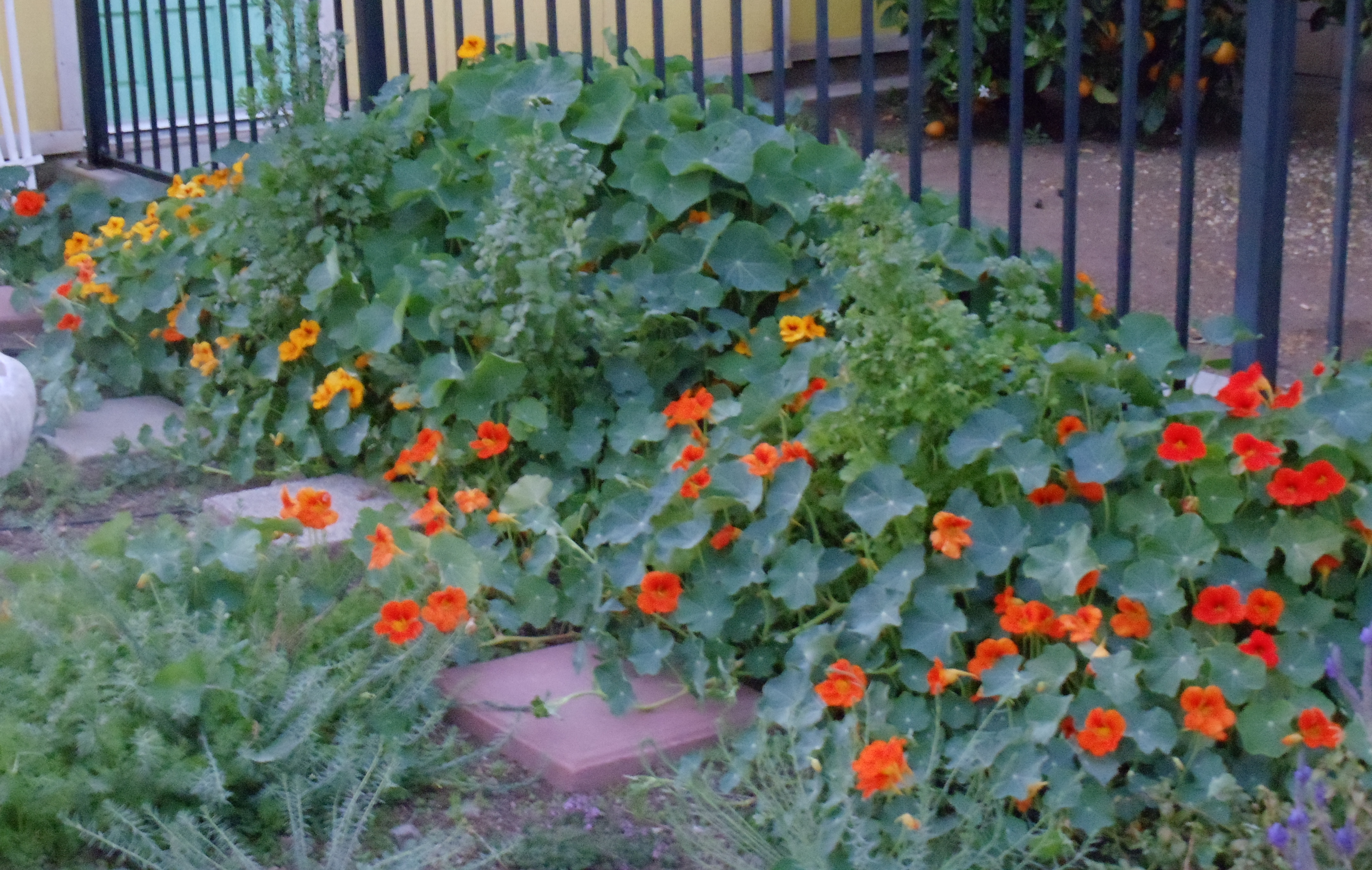The Best Companion Plants For Nasturtiums
Title: The Best Companion Plants for Nasturtiums
Introduction:
Nasturtiums are beautiful, edible flowers that are a great addition to any garden. They are also beneficial to other plants in the garden, making them a great choice for companion planting.
In this blog post, we will discuss the best companion plants for nasturtiums. We will also provide some tips on how to plant and care for these plants together.
Main Content:
Benefits of Companion Planting with Nasturtiums
There are many benefits to companion planting with nasturtiums. Some of the benefits include:
- Attracting pollinators: Nasturtiums are a great attractor of pollinators, such as bees, butterflies, and hummingbirds. These pollinators are essential for the pollination of other plants in the garden.
- Repelling pests: Nasturtiums can also help to repel pests, such as aphids, cabbage worms, and Japanese beetles. This is because the nasturtiums' scent and taste are unpleasant to these pests.
- Improving soil quality: Nasturtiums can help to improve soil quality by fixing nitrogen in the soil. Nitrogen is an essential nutrient for plant growth.
- Providing ground cover: Nasturtiums can also be used as ground cover. This can help to suppress weeds and keep the soil moist.
Best Companion Plants for Nasturtiums
Some of the best companion plants for nasturtiums include:
- Brassicas: Brassicas, such as broccoli, Brussels sprouts, cabbage, cauliflower, kale, and kohlrabi, benefit from being planted near nasturtiums. The nasturtiums help to repel pests that can damage brassicas, such as aphids, cabbage worms, and Japanese beetles.
- Cucumbers: Cucumbers and nasturtiums are a great combination. The nasturtiums help to repel cucumber beetles, which can be a major pest of cucumbers.
- Marigolds: Marigolds are another great companion plant for nasturtiums. Marigolds help to repel nematodes, which can damage the roots of nasturtiums.
- Potatoes: Potatoes and nasturtiums can be planted together to help repel potato beetles.
- Tomatoes: Tomatoes and nasturtiums can also be planted together. The nasturtiums help to attract pollinators, which are essential for the pollination of tomatoes.
Tips for Planting and Caring for Nasturtiums with Companion Plants
When planting nasturtiums with companion plants, it is important to consider the size and growth habits of the plants. For example, nasturtiums can grow quite tall, so it is important to plant them with shorter plants that will not be shaded out.
It is also important to water the plants regularly, especially during hot, dry weather. Nasturtiums are not very drought-tolerant.
Finally, be sure to deadhead the flowers regularly to encourage new blooms.
Conclusion
Nasturtiums are a great choice for companion planting. They are beneficial to other plants in the garden and can help to attract pollinators, repel pests, and improve soil quality.
If you are looking for ways to improve your garden, consider planting nasturtiums with some of the companion plants listed above. You will be glad you did!
Nasturtiums are a versatile and beautiful flower that can be grown in a variety of settings. They are also a great companion plant for many other vegetables, helping to deter pests and attract pollinators.
If you are interested in learning more about companion planting with nasturtiums, I recommend visiting Home Gardening. This website has a wealth of information on the topic, including a list of the best companion plants for nasturtiums, as well as tips on how to plant and care for these flowers.
FAQ of companion plant nasturtium
What are the benefits of using nasturtium as a companion plant?
Nasturtiums are a great companion plant for a variety of vegetables, flowers, and herbs. They have a number of benefits, including:
- Attracting beneficial insects: Nasturtiums attract a variety of beneficial insects, including ladybugs, hoverflies, and lacewings. These insects help to control pests, such as aphids and spider mites.
- Repelling pests: Nasturtiums have a strong scent that some pests find unpleasant. This can help to repel pests, such as squash bugs, cucumber beetles, and cabbage loopers.
- Improving soil quality: Nasturtiums are nitrogen-fixing plants, which means they can help to improve the nitrogen content of the soil. This can benefit other plants in the garden.
- Attracting pollinators: Nasturtiums are a favorite flower of pollinators, such as bees and butterflies. This can help to improve pollination of other plants in the garden.
What are some good companion plants for nasturtiums?
Some good companion plants for nasturtiums include:
- Cucumbers: Nasturtiums can help to repel cucumber beetles, which are a common pest of cucumbers.
- Tomatoes: Nasturtiums can help to attract pollinators, which are important for tomatoes to set fruit.
- Broccoli: Nasturtiums can help to repel cabbage loopers, which are a common pest of broccoli.
- Kale: Nasturtiums can help to attract pollinators, which are important for kale to set seed.
- Herbs: Nasturtiums can be planted near a variety of herbs, such as basil, mint, and oregano. These herbs can help to repel pests and improve the flavor of nasturtiums.
How do I plant nasturtiums as companion plants?
When planting nasturtiums as companion plants, there are a few things to keep in mind:
- Plant nasturtiums near plants that they benefit. For example, plant nasturtiums near cucumbers to help repel cucumber beetles.
- Plant nasturtiums at least 1 foot away from other plants. This will give the nasturtiums enough space to grow and spread.
- Water nasturtiums regularly. Nasturtiums are drought-tolerant, but they will produce more flowers if they are watered regularly.
Image of companion plant nasturtium
10 different images of companion plant nasturtium that are free to use:
- Nasturtium and tomatoes. Nasturtium is a great companion plant for tomatoes because it helps to deter pests, such as aphids and whiteflies. It also attracts pollinators, which helps to improve the tomato yield.

- Nasturtium and potatoes. Nasturtium is also a good companion plant for potatoes because it helps to repel the Colorado potato beetle. The nasturtium's leaves contain a chemical that the beetle finds distasteful.

- Nasturtium and cucumbers. Nasturtium can also be planted with cucumbers to help deter cucumber beetles. The beetles are attracted to the nasturtium's flowers, but they find the leaves to be toxic.

- Nasturtium and beans. Nasturtium can also be planted with beans to help improve the bean yield. The nasturtium's roots release nitrogen into the soil, which is a nutrient that beans need.

- Nasturtium and carrots. Nasturtium can also be planted with carrots to help deter carrot flies. The carrot flies are attracted to the nasturtium's flowers, but they find the carrot leaves to be toxic.
- Nasturtium and lettuce. Nasturtium can also be planted with lettuce to help deter slugs and snails. The slugs and snails are attracted to the nasturtium's leaves, but they find the lettuce leaves to be unpalatable.

- Nasturtium and flowers. Nasturtium can also be planted with other flowers to help attract pollinators. The nasturtium's bright flowers are a favorite of bees, butterflies, and hummingbirds.

- Nasturtium and herbs. Nasturtium can also be planted with herbs to help repel pests. The nasturtium's leaves contain a chemical that is toxic to some pests, such as aphids and whiteflies.

- Nasturtium and vegetables. Nasturtium can also be planted with other vegetables to help improve the soil quality. The nasturtium's roots release nitrogen into the soil, which is a nutrient that many vegetables need.

- Nasturtium and strawberries. Nasturtium can also be planted with strawberries to help deter slugs and snails. The slugs and snails are attracted to the nasturtium's leaves, but they find the strawberry leaves to be unpalatable.

Post a Comment for "The Best Companion Plants For Nasturtiums"